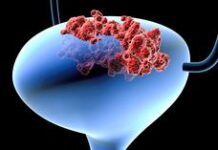In the largest and most detailed population-based cohort study to date, the researchers from the Karolinska Institutet in Stockholm, Sweden found that individuals with autism spectrum disorders, when present with comorbid intellectual disability and/or birth defects, were at a higher risk of cancer in early life, compared with individuals without autism spectrum disorders. The association remained stable after adjustment for sex, birth year, parental age, parental education, birth characteristics, as well as maternal smoking, and was unlikely attributable to other confounding, including familial confounding and polygenetic pleiotropy between autism spectrum disorders and cancer.
Additional research on specific cancer types should be considered to gain a better understanding of the burden of different cancer types among individuals with autism spectrum disorders and such comorbidities. The study focused on cancer diagnosis up to age 30, so continued follow-up is needed to examine the risk of cancers diagnosed in later life among individuals with autism spectrum disorders, regardless of presence of comorbidities, as the aetiologies of cancers diagnosed in later life likely differ from those diagnosed in early life according to an article published on 13 April 2022 in the Annals of Oncology.
Autism spectrum disorders are characterised by impairment in social communication and restricted and repetitive behaviours, affecting 1-2% of the world population. The prevalence of autism spectrum disorders is growing, presumably due to increased awareness and screening vigilance. Following early onset of symptoms, autism spectrum disorders require life-long support, and lead to reduced life expectancy due to multiple comorbidities.
Because cancer is a leading cause of death among children and adults, individuals with autism spectrum disorders are unlikely to be an exception. Whether risk of cancer is higher among individuals with autism spectrum disorders remains, however, controversial, although previous studies suggested shared disease mechanisms between autism spectrum disorders and cancer.
The authors wrote in the background that few previous studies examining cancer risk among individuals with autism spectrum disorders rendered inconsistent findings, perhaps due to low statistical power (e.g. small sample size and short follow-up) and incomplete control for potential confounders (e.g. birth characteristics and familial confounding). These studies also focused exclusively on narrowly defined autistic disorder, leaving the full spectrum of autism unaddressed.
The study team analyzed risk of cancer overall and by cancer type among individuals with both autistic disorder and other autism spectrum disorders as well as by comorbidity status with intellectual disability and birth defects, using a large national Swedish cohort with detailed adjustment for potential confounders. Intellectual disability and birth defects are common comorbidities of autism spectrum disorders and are both associated with an increased risk of cancer. They also performed a sibling comparison to address familial confounding and a genetic correlation analysis to address confounding due to potential polygenetic pleiotropy between autism spectrum disorders and cancer.
A population-based cohort study included 2.3 million individuals live-born to mothers from Nordic countries during 1987-2013 in Sweden with follow-up through 2016, up to age 30. Individuals with autism spectrum disorders were ascertained through the Swedish National Patient Register. The study team estimated the relative risk of cancer in relation to autism spectrum disorders by odds ratios (ORs) and associated 95% confidence intervals (CIs) derived from logistic regression, after detailed adjustment for potential confounders.
An overall increased risk of any cancer was observed among individuals with autism spectrum disorders (OR 1.3; 95% CI 1.2-1.5), compared with individuals without autism spectrum disorders. The association for any cancer was primarily noted for narrowly defined autistic disorder (OR 1.7; 95% CI 1.3-2.1) and autism spectrum disorders with comorbid birth defects (OR 2.1; 95% CI 1.5-2.9) or both birth defects and intellectual disability (OR 4.8; 95% CI 3.4-6.6). An association was also suggested for autism spectrum disorders with comorbid intellectual disability (OR 1.4; 95% CI 0.9-2.1), but it was not statistically significant.
Autism spectrum disorders alone (e.g. without comorbid intellectual disability or birth defects) was not associated with an increased risk of any cancer (OR 1.0; 95% CI 0.8-1.2).
Sibling comparison and genetic correlation analysis showed little evidence for familial confounding or confounding due to polygenetic pleiotropy between autism spectrum disorders and cancer.
The authors concluded that they observed an increased risk of any cancer among individuals with autism spectrum disorders, up to age 30, compared with individuals without autism spectrum disorders. The increased cancer risk in relation to autism spectrum disorders was mainly due to co-occurring birth defects or intellectual disability in autism spectrum disorders. Autism spectrum disorders without comorbid intellectual disability or birth defects was not associated with an increased risk of cancer.
The authors acknowledged the participants and investigators of FinnGen Study.
This project has received funding from the Swedish Cancer Society, the European Union’s Horizon 2020 research and innovation programme Research on European Children and Adults born Preterm, Karolinska Institutet, and the China Scholarship Council.
Reference
Liu Q, Yin W, Meijjsen JJ, et al. Cancer risk in individuals with autism spectrum disorder. Annals of Oncology; Published online 13 April 2022. DOI: https://doi.org/10.1016/j.annonc.2022.04.006





